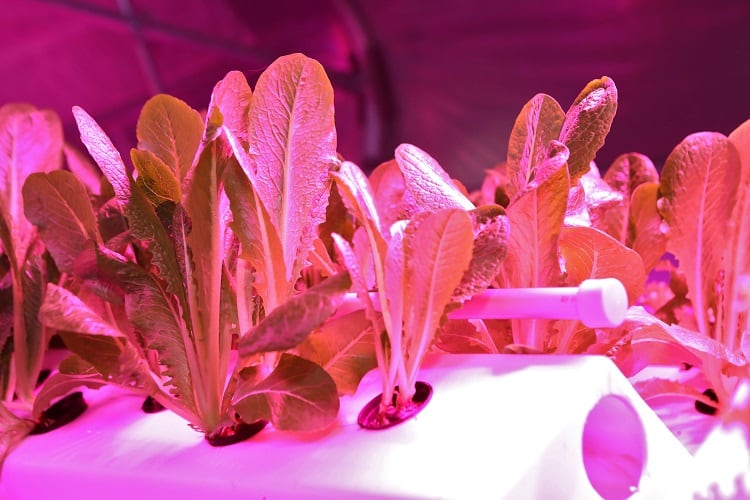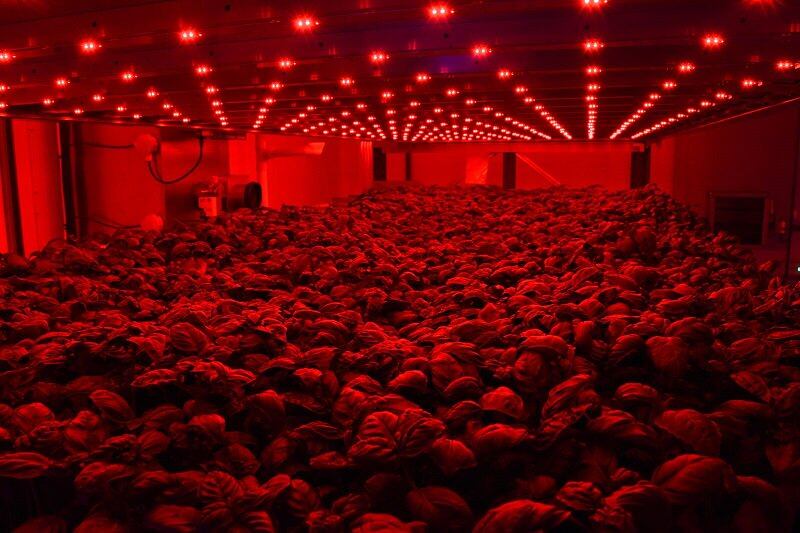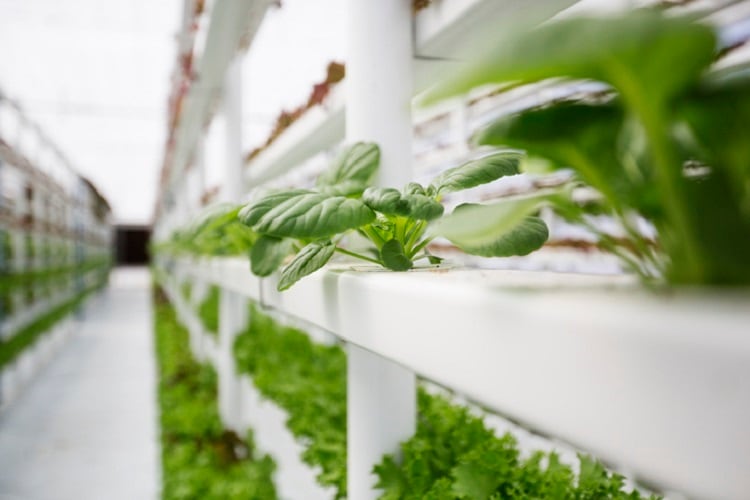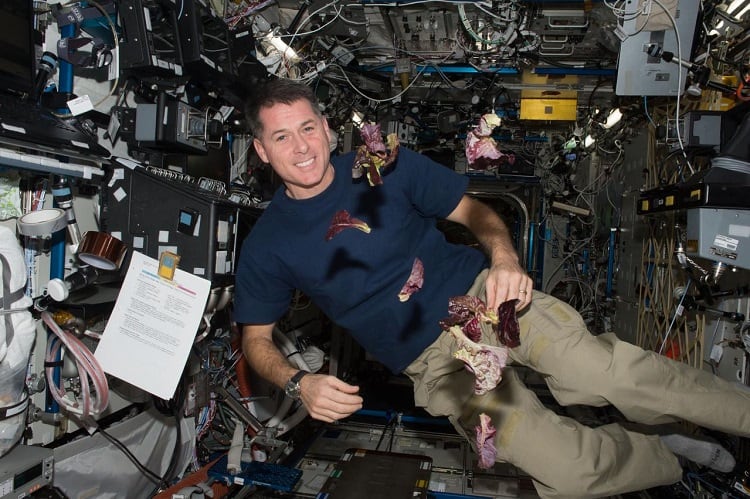According to new research out of the John Innes Centre, the University of Bristol, and technology provider LettUs Grow, there is a growing environmental and economic case for vertical farms.
Yet key knowledge gaps remain. In a recently published study, six authors lay out future research areas they say could accelerate the ‘sustainable intensification’ of vertical farming, using aeroponic systems.
Allocating resources to these research areas could help transform food production on a larger scale, suggested Dr Antony Dodd, a group leader at the John Innes Centre and senior author of the study.
“By bringing fundamental biological insights into the context of the physics of growing plants in an aerosol, we can help the vertical farming business become more productive more quickly, while producing healthier food with less environmental impact.”
What is vertical farming?
Vertical farming – or ‘plant factories’ as they are otherwise termed – are vertically-stacked, fully controlled environments used to produce food.
They use either artificial or natural light and are commonly founded on soil-free growing systems. Rather, they use hydroponic or aeroponic irrigation technology.
Vertical farming is growing in popularity due to its environmental and economic benefits. Indeed, the industry has been forecast to have an annual compound growth of 21.3% to reach an estimated $9.6bn by 2025, according to Grand View Research.
The benefits are far reaching. Not only does vertical farming have the potential to facilitate urban food production, fewer food miles, seasonal independence of crop production, and price stabilisation, but is also allows for product consistency.
For Dr Dodd, climate change is set to increase demand for vertical farming systems. “Projected changes in regional weather patterns and water availability are likely to impact agricultural productivity soon,” he said. “Vertical farming offers the ability to grow high nutritious crops in a climate resilient manner all year round, providing a reliable income stream for growers.”
Further, such fully controlled environments can be installed in disused buildings or tunnels and allow for cultivation at latitudes incompatible with certain crops, Dr Dodd explained.
“Vertical systems allow us to extend the latitude range on which crops can be grown on the planet, from the deserts of Dubai to the 4-hour winter days of Iceland. In fact, if you were growing crops on Mars you would need to use this kind of technology because there is no soil.”
And aeroponics?
The most well-known soil-free techniques in vertical farming are hydroponics and aeroponics.
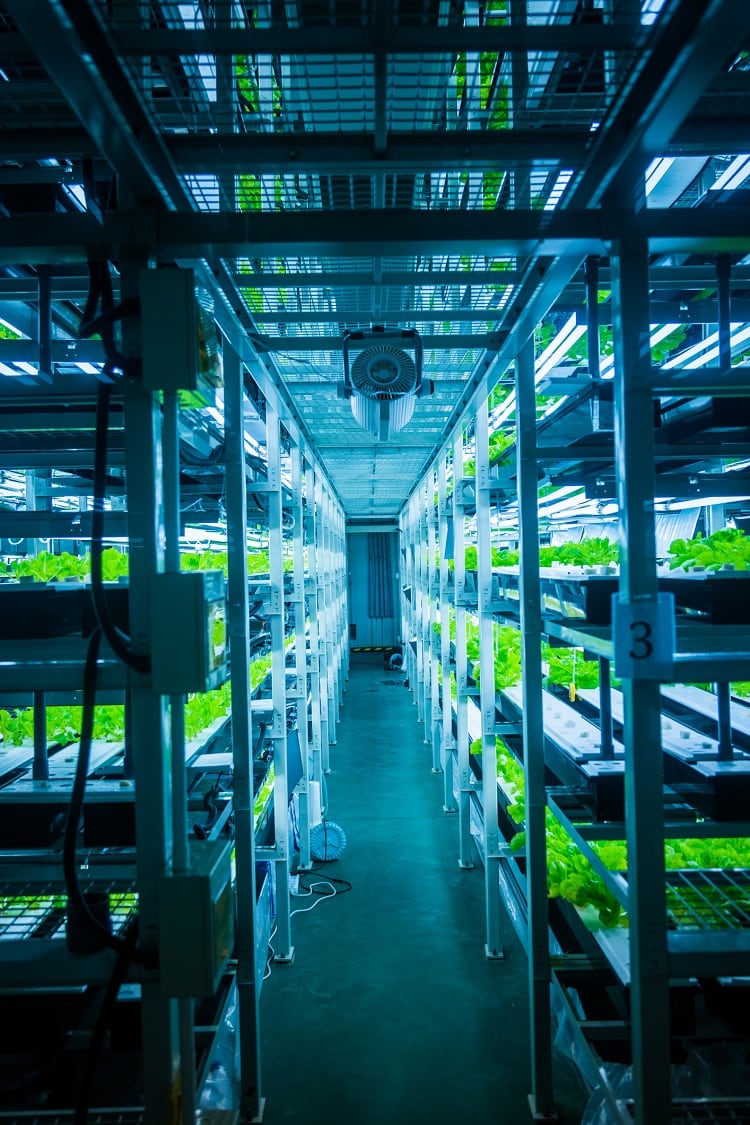
In hydroponics farming, plant roots are either partially or completely immersed in a nutrient solution. In aeroponic farming, however, the roots are exposed to nutrient-containing droplets.
According to the study authors, this technique can lead to greater plant productivity than both soil and hydroponic cultivation, and is thought to ‘resolve a variety of plant physiological constraints’ that occur within hydroponic systems.
These include greater oxygen availability within the root bed and enhanced water use efficiency, noted the authors.
According to a 2014 study by Chandra et al. for example, yields of aeroponically cultivated basil, parsley, cherry tomato, squash, bell pepper and red kale increased by 19%, 21%, 35%, 50%, 53% and 65% compared to soil cultivation, respectively.
And when compared to hydroponic cultivation, aeroponic cultivation was reported to achieve greater tomato fruit mass, according to a 2019 study by Wang et al.
However, the study authors note that the variety of aeroponic technologies, species cultivated, and growth conditions makes systematic comparisons of technologies and growth conditions ‘challenging’.
Further, certain limitations may exist. While aeroponics is known to boost some plant performance, it also requires more extensive farm infrastructure and control technology compared to hydroponics.
Therefore, aeroponics may be ‘less compatible’ with certain economics, crops, or locations with intermittent electricity supply.
Seven strategic areas of future research, that could help minimise operational cost while maximising productivity, have been suggested by the authors.
Knowledge gaps
While the authors have potential testable hypotheses as to why aeroponic cultivation can be more productive than hydroponic or soil cultivation – such as altered photosynthetic performance, oxygen availability, and nutrient supply – they suggest further research be undertaken to help inform crop breeding and farm engineering.
Understanding root development architecture under aeroponic conditions for a ‘key range’ of crops at varying developmental stages, and how these differ from other growing techniques, ‘might also provide insights to inform cultivation conditions’, they note.
Further, understanding the relationship between aeroponic droplet size, nutrient content, droplet deposition and plant performance, could help ensure optimisation of crop quality, nutrition, and resources. As would understanding the relationship between aeroponic fertilisation and daily cycles of environmental conditions – such as lighting, airflow, temperature, and humidity.
Other knowledge gaps include experimental and analytical frameworks with which to compare vertical farming technologies for a range of crops. “Frameworks could collate productivity metrics and resource consumption to allow assessment of the environmental and economic sustainability of each technology,” note the authors. “This could underpin more rapid technological development and collaboration towards improved food security.”
Finally, the authors suggest research be undertaken to understand the nature and recycling of root exudates with the nutrient solutions of closed aeroponic systems, as well as how different aeroponic atomisation methods affect microbial community structure at the root-aerosol interface. Consequences for crop productivity, crop protection, food safety and farm engineering, should also explored, they conclude.
Source: New Phytologist
‘Getting to the roots of aeroponic indoor farming’
Published: 24 June 2020
DOI: 10.1111/NPH.16780
Authors: Bethany M. Eldrige, Lillian R. Manzoni, Calum A. Graham, Billy Rogers, Jack R. Farmer, and Antony N. Dodd.


